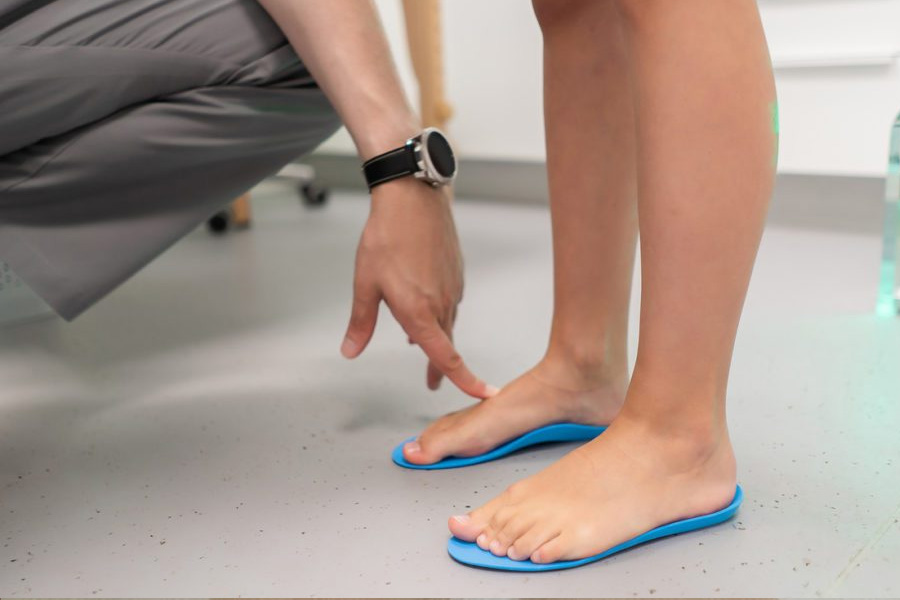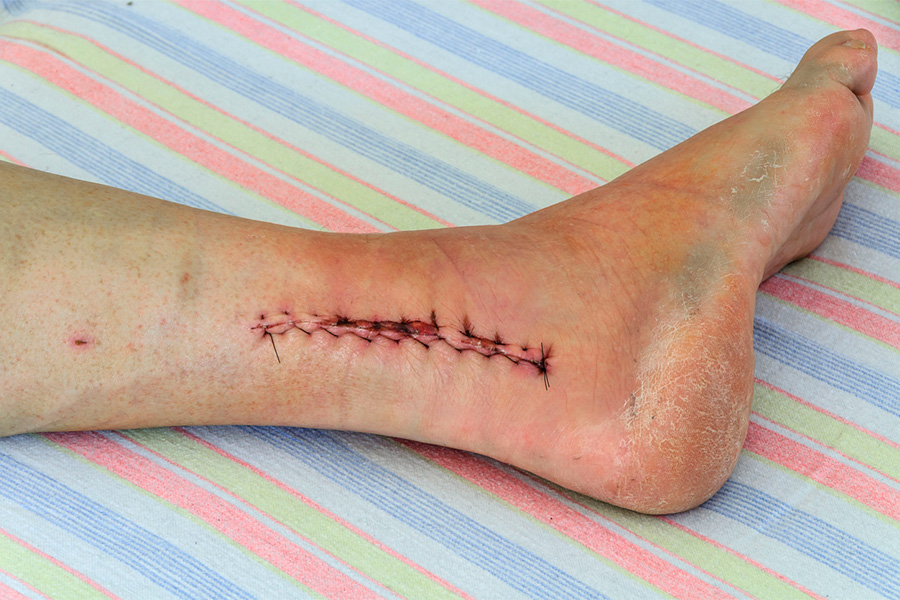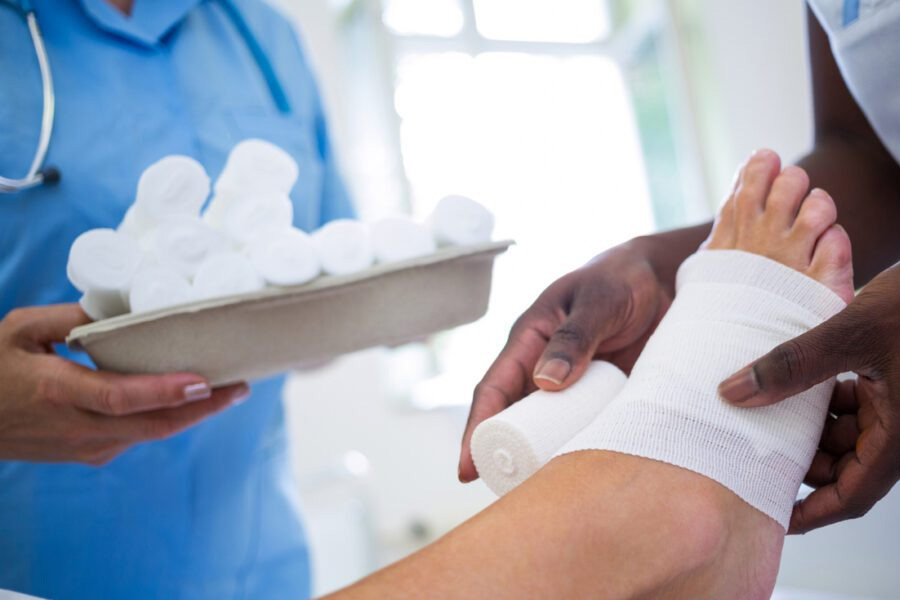When age, overuse, poorly fitting shoes, injury or disease contributes to foot and ankle issues, you need to march over to see one of our podiatrists asap! And if you think the only reason to see a podiatrist is for nail care, think again! Here are just some of the reasons to visit our podiatrists:
Arch Disorders
If your arch is abnormally flat or extremely high, it can cause pain and problems with your ankles and feet. Many arch disorders can be treated through custom-made orthotics available only from our podiatrist.
Bunions
A bunion is a bump on the side of the great toe joint and are most commonly treated by conservative means such as shoe gear modification, padding and orthoses. When this fails to provide adequate relief, surgery often is recommended.
Corns and Calluses
Corns result from build-up of skin near, around, or between the toes; calluses occur when hard skin builds up on the sides or underside of the foot. Both can turn into blisters or open sores but can be prevented by wearing properly fitting shoes. Our podiatrists can treat the underlying deformities that will prevent further toe complications.
Diabetic Neuropathy
Diabetic Neuropathy prevents diabetics from feeling sensations, most often in their feet. That’s why patients with diabetes should have a podiatrist manage their foot health before a simple scape, bruise, or callus leads to infection, ulcerations or, worse case, amputation. Regular visits to our podiatrist will ensure any injury or concern is addressed well before it becomes problematic. Our podiatrists will ensure your shoes (and socks) fit properly and may prescribe therapeutic (prescription) footwear, which is a covered benefit in many insurance plans. They can also help you manage sores and wounds to your foot.
Hammertoes
Hammertoes result from injury, wear and tear, ill-fitting shoes, as well as diseases like arthritis or diabetes that cause an abnormal bend in the second joint of the toe. Hammertoe is most commonly treated by conservative means such as shoe gear modification, padding, taping and orthoses. For severe cases, our podiatrists can surgically correct the tendon that is causing the toe to bend.
Heel Spurs
A heel spur is a growth on your heel bone that usually protrudes toward the arch of the foot. Many are unaware they have a heel spur because the condition is not always painful by itself. If a heel spur is present with pain from plantar fasciitis, successful treatment of that condition will normally resolve any symptoms from the heel spur.
Peripheral Arterial Disease (PAD)
PAD is a common, painful condition that describes reduced circulation to the extremities due to build-up of plaque in the arteries. Our podiatrists use a PADnet™ test to provide accurate and non-invasive diagnosis testing for PAD, which can be treated by making changes in your diet and exercising to promote heart and vascular health.
Plantar Fasciitis
When the plantar fascial band located on the bottom of your foot becomes stretched or strained, it’s time to see our podiatrists. If conservative treatments such as stretching, icing, and anti-inflammatory medications don’t resolve the issue, our podiatrists may recommend a non-surgical treatment called Extracorporeal Shockwave Therapy (ESWT), which uses strong shock waves to relieve chronic plantar fascia pain.
Plantar Warts
Plantar warts are caused by the human papilloma virus (HPV) and are highly contagious. Our podiatrists will treat plantar warts with topical solutions of nitrogen or injections; if the wart fails to respond we may offer yellow pulsed dye laser treatment to successfully target the infected area without damage to the surrounding tissues or skin.
Tendon and Joint Pain
Sports, accidents and conditions like arthritis can cause tendon and joint pain, especially in the big toe. These are usually addressed with conservative treatments like rest and anti-inflammatory medication. For extensive damage to the tendons – including the plantar fascia and Achilles tendon – we may use TopazTM Microdebriders, which is a minimally invasive treatment that uses bipolar plasma-mediated radiofrequency (RF)-based technology to increase vascularity and stimulate healing.
Sprained Ankles, Tendon Tears and Fractures
Athletes aren’t the only ones prone to foot and ankle injuries! Whether you have a sprained ankle, tendon tear, fracture, or other injury, the Centers for Foot and Ankle Care (CFAC) board-certified will help you get back on your feet. Our podiatrists are board-certified surgeons and can surgically repair all foot and ankle fractures and soft tissue injuries and provide comprehensive care for all types of foot and ankle conditions. With 18 locations in Cincinnati and the surrounding areas, we have a location near you.





